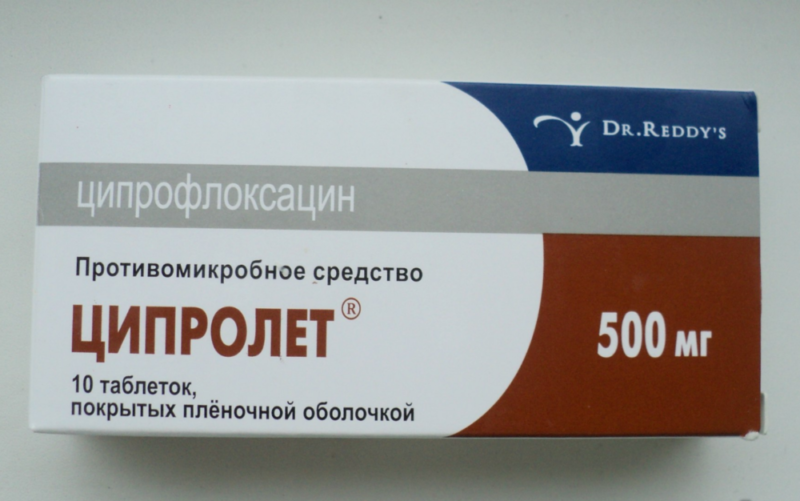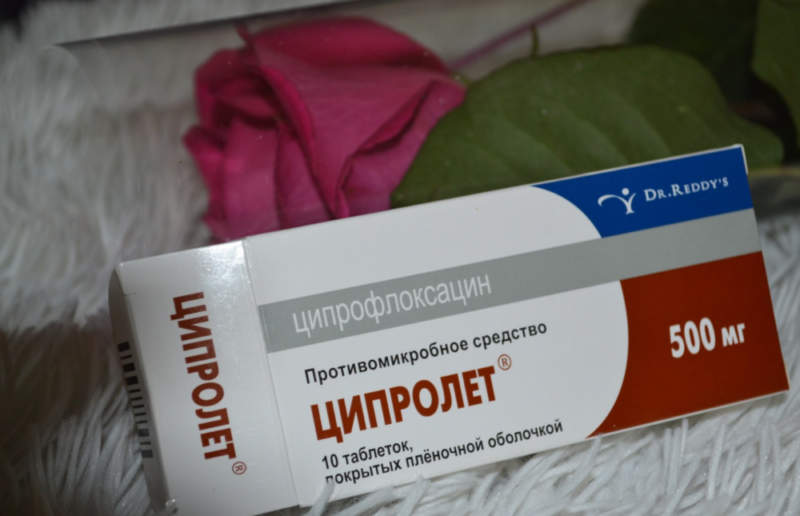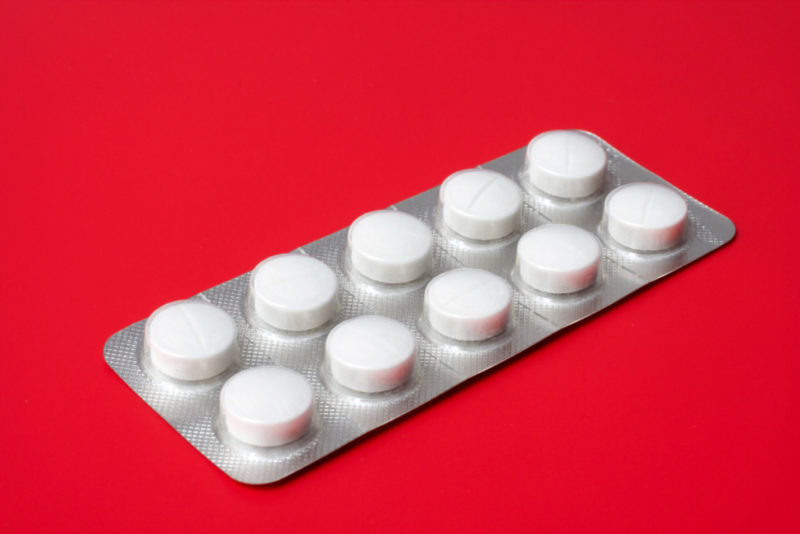Thanks to antibiotic drugs, it has become possible to quickly and effectively resist the detrimental vital activity of pathogenic microorganisms. As a rule, such drugs are used for the therapeutic treatment of inflammatory and infectious diseases. The modern and safe antimicrobial medication is Ciprolet 500, the instruction for use of which contains the entire spectrum of its use.
Material Content:
The composition of the drug
This antibacterial drug is available in the form of round white tablets. The central active compound is ciprofloxacin hydrochloride.
This component is characterized by the ability to influence the DNA and RNA of certain types of bacteria.
The mechanism of action of the substance is aimed at suppressing, suppressing and disrupting the synthesis of bacterial DNA and the further activity of pathogenic microorganisms.
In addition to the main substance, the preparation contains a small amount of additional compounds: starch, croscarmellose, silicon dioxide, pharmaceutical talc, magnesium stearate, hypromellose, sorbic acid, titanium dioxide. In a cardboard package there is one blister plate with ten tablets.
What is prescribed Ciprolet 500 mg
This antibacterial medication is a synthetic medicine from the group of fluoroquinolones.The main active compound of Ciprolet is capable of acting only on bacterial pathogens of an infectious disease. In this regard, the use of the product will be ineffective against viruses or fungal microorganisms.
Due to its wide spectrum of action, Ciprolet helps in the treatment of infections of bacterial origin:
- Bacterial infection of the respiratory system, which was provoked by Klebsiella, Enterobacter, Haemophilus influenzae, Staphylococcus aureus (acute respiratory infections, bronchitis, bacterial pneumonia, Legionellosis, empyema).
- Infections of the otolaryngic organs - middle ear, tonsils and sinuses (sinusitis, otitis media, pharyngitis).
- Bacterial damage to the eyes.
- Infectious pathology of the kidneys and urinary system, prostate.
- Infectious diseases of the joints, skin, bones and tendons.
- Infectious inflammation of the pelvic organs in women.
- Infectious infection of the abdominal cavity (bacteria that affect the gastrointestinal tract and biliary tract, including peritonitis).
- Pulmonary anthrax, sepsis, bacteremia.
- Gallbladder infection.
But also this therapeutic agent is often used to prevent infection by patients with a weakened immune system. Quite often it is a component of complex treatment.
Instructions for use and dosage
Take Ciprolet on an empty stomach and drink plenty of water. The dosage and course of treatment is determined by a specialist based on a medical history.
An approximate treatment regimen is as follows:
- For the treatment of bacterial damage to the kidneys and the genitourinary system, as well as the lower respiratory tract, take 500 mg twice a day.
- In gonorrhea, the standard dosage is 500 mg once.
- In the case of severe enteritis, prostatitis and a number of gynecological diseases, patients are prescribed to drink 500 mg ciprolet tablets twice in 24 hours.
- For digestive disorders and diarrhea, 500 mg is prescribed once.
- Therapy of severe infectious infection (inflammation of the lungs and abdominal cavity, diseases of bone and joint tissues that are provoked by staphylococcus) is accompanied by a single dose of 750 mg of the drug.
As a rule, the duration of the therapeutic course is at least ten days. It is extremely important to take the drug without a long break (more than 12 hours), since the concentration of the main component and the therapeutic effect will decrease. To completely stop the signs of an infectious disease, the drug should be taken for several more days in a reduced dosage. In the case of chronic renal dysfunction, the dosage of the drug is halved.
During pregnancy and lactation
An absolute limitation to the use of this drug is the period of gestation, as well as breastfeeding. Such a ban is directly related to the fact that the main active compound is able to penetrate the placental defense and excreted in breast milk. The main component has an extremely negative effect on embryonic development, and can also provoke various disorders. If therapeutic treatment with Ciprolet is needed during breastfeeding, stop lactation.
Drug interaction
The antibiotic Ciprolet is able to interact with other therapeutic medicines, so it is important to take into account a number of features before using this substance as a complex therapy.
- An antibiotic medicine can increase theophylline levels.
- Antacids and drugs, which contain aluminum, zinc and iron, can slow the absorption of Ciprolet. In this regard, it is recommended to adhere to a 4-hour break between taking medications.
- Concurrent use with warfarin significantly increases the risk of bleeding.
- Increases the negative effects of cyclosporine on kidney function.
- With simultaneous use with didanosine, the absorption of the main active compound of Ciprolet is significantly reduced.
At the same time, the presented drug interacts quite well with other antibacterial drugs. Before starting therapy, a specialist should assess the possible risks and choose the right treatment regimen.
Alcohol compatibility
It should be borne in mind that during therapeutic treatment with an antimicrobial medication of a wide spectrum of action, the use of alcoholic and alcohol-containing drinks is not allowed. Otherwise, there is a risk of the progression of negative reactions and a significant decrease in the pharmacological result from taking the tablets.
Contraindications, side effects and overdose
According to the instructions for use, Ciprolet is not allowed for use with an inadequate reaction of the immune system, as well as in some other conditions.
- Pseudomembranous colitis.
- With tendon lesions.
- In the case of epilepsy and circulatory disorders in the brain of a severe course.
- Pregnancy and lactation.
- Patient's age is up to 5 years.
- Concomitant therapy with tizanidine.
And it is also necessary to highlight the conditions and disorders in which Ciprolet is used with extreme caution and only under the supervision of a physician. These include mental disorders, decreased keratin clearance, atherosclerosis, and the patient's advanced age. During the treatment period, one should refrain from working with complex mechanisms, driving a car, as well as activities that require increased concentration.
As a rule, an antimicrobial agent rarely provokes the development of serious adverse reactions. However, in some cases, negative manifestations are possible that affect various body systems.
These include:
- reactions from the gastrointestinal tract (nausea and vomiting, digestive upset, flatulence, pancreatic inflammation, cholestasis, loss of appetite, abdominal pain syndrome, hepatitis, cholestatic jaundice);
- leukocytosis, a decrease in the number of red and white blood cells, a change in the cellular composition of the blood, impaired hematopoietic function;
- dizziness attacks, acute migraine, fatigue, neuropsychic weakness, anxiety syndrome, panic attacks, sleep problems, tremors, seizures, temporary hearing loss, confusion;
- impaired renal function, the presence of blood clots in urine, an increased content of creatinine and bilirubin;
- jumps in blood pressure, lowering blood pressure, inflammation of the vascular walls, pirouette and hemolytic anemia;
- inadequate reaction of the body, which manifests itself in the form of an allergy (urticaria, skin rash, swelling, erythema, increased sensitivity to daylight, anaphylactic shock, muscle pain, bronchospasm).
If severe adverse reactions occur, the patient must stop treatment with this drug, as well as check blood and urine counts. In the event of a significant excess of the prescribed dosage, signs of an overdose are possible: fainting, confusion, dizziness, convulsive syndrome, gastrointestinal upset, jumps in blood pressure. An injured person will need medical attention to resolve certain symptoms. Hemodialysis for this drug will be ineffective.
Analogues of an antibacterial drug
To date, there are many pharmaceutical companies that produce structural analogues of Ciprolet. Synonyms contain a similar active compound, act bactericidal, have a similar pharmacological manifestation, and are also prescribed for therapeutic treatment of the same diseases. Such substitutes include: Ciprocinal, Ciprosan, Ciprinol, Atenoxime, Betaciprol, Cipromed, Ciprosol, Citeral, Ecocifol, Oftocipro.To select an analogue, it is recommended to consult a specialist.


















